Related Research Articles

Sir Godfrey Kneller, 1st Baronet, was the leading portrait painter in England during the late 17th and early 18th centuries, and was court painter to English and British monarchs from Charles II to George I. His major works include The Chinese Convert ; a series of four portraits of Isaac Newton painted at various junctures of the latter's life; a series of ten reigning European monarchs, including King Louis XIV of France; over 40 "kit-cat portraits" of members of the Kit-Cat Club; and ten "beauties" of the court of William III, to match a similar series of ten of Charles II's mistresses painted by Kneller's predecessor as court painter, Sir Peter Lely.
Sir Robert Bell SL of Beaupré Hall, Norfolk, was a Speaker of the House of Commons (1572–1576), who served during the reign of Queen Elizabeth I.

Lady Mary Wroth was an English noblewoman and a poet of the English Renaissance. A member of a distinguished literary family, Lady Wroth was among the first female English writers to have achieved an enduring reputation. Mary Wroth was niece to Mary Herbert née Sidney, and to Sir Philip Sidney, a famous Elizabethan poet-courtier.

Barbara Sidney, Countess of Leicester was a Welsh heiress, and the first wife of Robert Sidney, 1st Earl of Leicester. Her family connections tied her to prominent contemporary figures such as Sir Walter Raleigh.
Sir Edward Dering, 2nd Baronet of Surrenden Dering, Pluckley, Kent was an English politician who sat in the House of Commons at various times between 1660 and 1674.
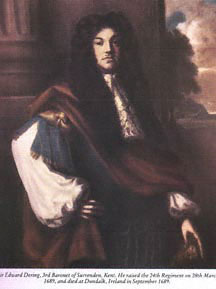
Sir Edward Dering, 3rd Baronet was an English Member of Parliament and baronet.

Sir Edward Dering, 1st Baronet (1598–1644) of Surrenden Dering, Pluckley, Kent was an English antiquary and politician.
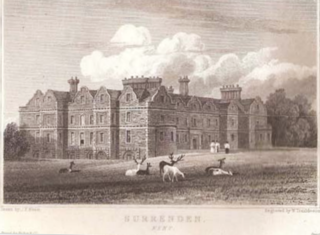
Sir Edward Dering, 5th Baronet was an English politician.
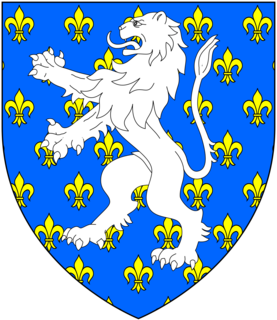
Sir John William de la Pole, 6th Baronet of Shute in the parish of Colyton, Devon, was a Member of Parliament for the rotten borough of West Looe. In 1791 he published, under the title Collections Towards a Description of the County of Devon, the researches on the history and genealogy of Devonshire made by his ancestor the antiquary Sir William Pole (d.1635), which he did not publish in his lifetime and which were enlarged by his son Sir John Pole, 1st Baronet, but which were partly destroyed during the Civil War at Colcombe Castle.
Sir Thomas Wroth was an English courtier, landowner and politician, a supporter of the Protestant Reformation and a prominent figure among the Marian exiles.
Sir Thomas Wroth was an English gentleman-poet and politician who sat in the House of Commons at various times between 1628 and 1660. Active in colonial enterprises in North America, he became a strong republican in the Rump Parliament but stopped short of regicide.
St George Caulfeild was Lord Chief Justice of Ireland. He was a popular and respected judge, who was known in old age as "the good old man".
William Caulfield was an Irish barrister, Law Officer and judge: one of his sons became Lord Chief Justice of Ireland.
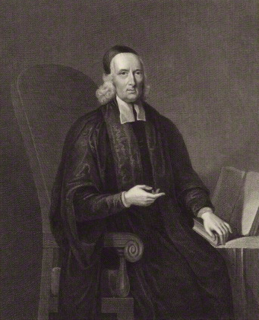
Sir George Wheler was an English clergyman and travel writer.
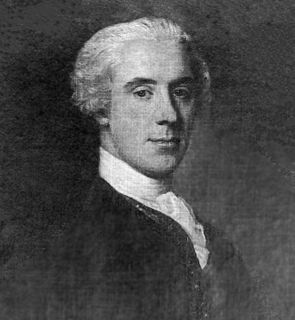
William Mure, known as others of his family as William Mure of Caldwell, was a Scottish lawyer and politician. He became a baron of the Scots exchequer, and was a friend of Prime Minister Lord Bute and David Hume.

Rhoda Delaval Astley was an English aristocrat and artist. She was married to Edward Astley, with whom she had a daughter and three sons. Lady Astley studied painting with Arthur Pond, who painted her portrait. Seaton Delaval Hall passed from the Delaval family to the Astley family through her descendants.

Tetton is an historic estate in the parish of Kingston St Mary in the English county of Somerset. The present grade II* listed Tetton House dates from 1790 and was enlarged and mainly rebuilt in 1924-6 by Hon. Mervyn Herbert (1882-1929) to the design of the architect Harry Stuart Goodhart-Rendel.
Edward Lewknor was the representative of a branch of a prominent Sussex family, in an armigerous line descending in the distaff side from the Camoys barony. Having attained standing as a member of parliament and by a position of service in the royal household, his career was ended abruptly by his involvement in Henry Dudley's conspiracy against Queen Mary I, and his consequent attainder. His children were restored in blood by Queen Elizabeth I.
Thomas William Goff was an Irish Conservative politician.
Thomas Clarence Edward Goff JP DL was an Anglo-Irish landowner, farmer, and politician who was a great-grandson of King William IV.